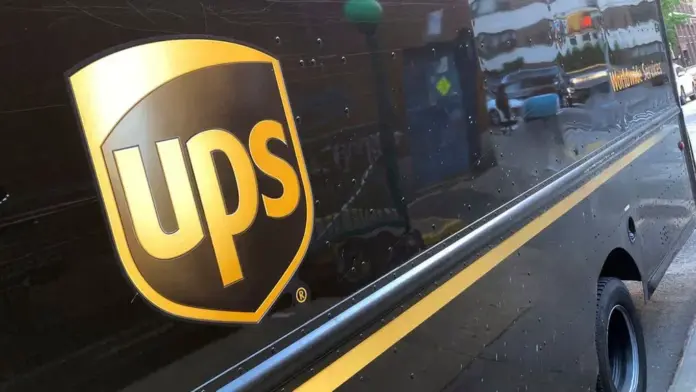UPS Layoffs Amazon 2025: In a significant shakeup of its workforce, UPS said it will eliminate 20,000 jobs. It is about 4% of its worldwide workforce. Although mass layoffs usually indicate economic hardship, UPS maintains this is a strategic, not reactive, decision. The reductions are connected to two significant changes: greater automation and a sharp retreat from its Amazon business.
Amazon: From Giant Partner to Less So
Amazon has been UPS’s biggest customer for years.
But CEO Carol Tomé indicated that much of that business isn’t worth it anymore.
She outlined a measured “glide down” strategy that will reduce UPS’s Amazon volume by half by mid-2026. Why? A lot of the Amazon-related shipping isn’t profitable, nor a good fit for UPS’s network.
In fact, Amazon package volume already dropped 16% in the previous quarter, a sharper decline than UPS anticipated. This led to the closing down of 73 U.S. buildings by June’s end. The closings are a significant physical reduction linked to the Amazon reduction.
Automation: The Future Within the Facilities
In conjunction with Amazon’s reduction, UPS is hastening its strategy of automation. The firm stated that 400 facilities would shortly be partially or completely automated. Automation will perform jobs such as sorting, labeling, loading, and unloading.
With machines undertaking more work, there is less labor required, said Tomé. That realignment accounts for why so many positions are in line to be cut. “With this restructuring, we also reduce our reliance on labor,” she said.
Labor Unions Push Back
The Teamsters union, which organizes over 300,000 UPS hourly employees, is not remaining silent. Its president, Sean O’Brien, made a robust reaction to the announcement of the layoffs.
“If UPS wishes to reduce management, fine,” he said. He then added that if they target good-paying union jobs, there will be a fight.
O’Brien made it clear that any effort to break the union contract will not pass without challenge. On the other hand, UPS spokesman Glenn Zaccara replied that stating the company will abide by all labor contracts. Nevertheless, the tension highlights the delicate balance between automation and workers’ rights.
Also read: Amazon Tariffs May Impact Prime Day 2025 Deals
The Tariff Question: Lingering but Uncertain
Although the ups layoffs amazon are not directly related to tariffs, UPS is watching U.S. trade policies closely. Former President Donald Trump’s sweeping tariffs, particularly the 145% levies on imports from China, are causing anxiety. UPS has noted a discernible effect on shipments of Chinese merchandise.
Numerous UPS customers that have connections to China are waiting for clarity.
Some won’t leave the market but are not sure what to do next. Tomé stated, “There’s so much uncertainty around the China orders.”
Revenue Outlook: Clouded by Uncertainty
UPS anticipates its revenue will fall in Q2 from last year. And, the double whammy of Amazon’s retrenchment and unpredictable tariffs is to credit the growth. Yet the company isn’t prepared to adjust its full-year outlook.
Tomé added that the second half of 2025 is difficult to forecast. “All those tariffs will eventually fall on the U.S. consumer,” she cautioned. Consumer confidence has fallen since January, though spending is steady.
Looking Ahead: Leaner, More Automated
UPS’s latest actions represent a sudden change in its business model. By stepping back from Amazon and investing in automation, UPS is attempting to be leaner, more profitable, and less reliant on bulk contracts.
The labor cuts and plant closures are difficult, but deliberate. As worldwide shipping responds to automation and shifting trade patterns, UPS is attempting to be one step ahead, even if it requires making difficult decisions.
For labour and unions, the task today is to retain jobs in an increasingly mechanised world. For UPS, it is a case of balancing efficiency with growth within a fast-developing market.








